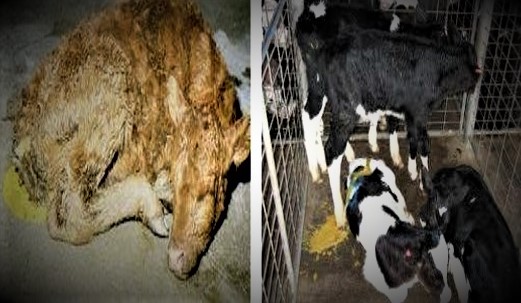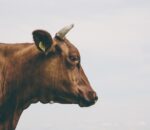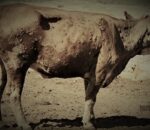Calf Diarrhea OR Calf Scour is the most common problem during the early weeks of life that leads to the death of young calves. Calf diarrhea can be entirely avoidable through good management practices. It is mostly fatal during the first 2 weeks after birth. Calf diarrhea starts with the sign of loose feces and progresses to a coma-like condition in calves. Diarrhea causes loss of water and salts in the animal body which leads to the condition of shock and death. In actuality, this shock condition is the cause of death instead of the germ that induced diarrhea.
Calf diarrhea is not a specific disease but it is a clinical sign that can be manifested by a disease complex having many possible causes.
There are two types of diarrhea that usually occur in new-born calves
- Nutritional
- Infectious
Nutritional diarrhea can be due to overfeeding of milk, changes in milk composition or quality, and usage of poor quality milk replacers. The nutritional imbalance makes calves more susceptible to infections.
While infectious diarrhea occurs due to infectious agents. Organisms that cause calf diarrhea are following
Bacterial Scour
- Escherichia coli
- Salmonella
- Clostridium perfringens
Viral Scour
- Rotavirus
- Coronavirus
- Adenovirus
Protozoal Scour
- Coccidia (Coccidiosis)
- Cryptosporidia
Signs of Calf Scour
Signs that can be seen during calf diarrhea are following
- Loss of appetite (Calves not ready to drink milk)
- May have fever (at initial stages)
- Thin, profuse, watery diarrhea
- Signs of dehydration are evident (Rough skin coat, Sunken eyes, inelastic skin, dry mucous membranes)
- Dull and lethargic
- May show cold extremities (Hypothermia)
- Unable to easily stand and walk
- Completely unable to rise
- Loss of consciousness

Calf Diarrhea Treatment
- Fluid therapy
- To replace the salts and fluid loss, fluid therapy should be done according to the level of dehydration. (Ringer Lactate @ 10-20ml /kg body weight)
- Secondary Treatment
- It depends upon the causative agent.
- In case of bacterial scour, antibiotics will be used.
- In the case of protozoal scour, anticoccidial drugs may be used.
- Supportive therapy
- Nursing care
Prevention of Calf Diarrhea
- A proper quantity of high-quality colostrum must be offered to calves within the first few hours after birth.
- Ensure adequate care of newborn calf to avoid calf diarrhea or calf scour.
- The temperature of colostrum and milk should be maintained at 36-38 degree Celsius before feeding.
- Milk should be fed twice daily at regular time intervals.
- Feeding utensils should be scrubbed and sanitized regularly to ensure complete hygienic condition.
- Sudden changes in milk quantity and composition should be avoided.
- Maintain hygienic conditions in the living areas of calves or individual calf pens and perform their regular disinfection.
- It is favorable to keep the calves in individual pens until the weaning occurs.
- Avoid overcrowding of calves in shed if individual pens are not used.
- Infected or diseased calves should be isolated from healthy ones.
- Disinfect the navel cord with povidone-iodine just after birth.
- To avoid stressful conditions in calves, provide adequate housing and environmental conditions.

